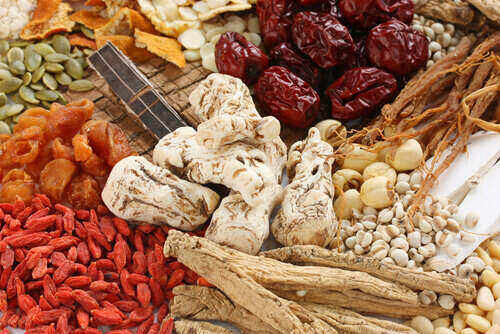
An Introduction to Traditional Chinese Medicine (TCM)
Posted by Taliyah Edwards on 2023-02-17
There are a lot of people who are not aware of what Traditional Chinese Medicine (TCM) is and how it works. If you're one of these people, here's a handy introduction to TCM that will give you a basic understanding of what this practice is all about.
Acu-moxa therapy
Acu-moxa therapy is a form of acupuncture that treats an underlying imbalance. It involves the stimulation of acupoints on the skin and acupoints along the circulation tract. The aim is to restore energy flow, which is deficient, in order to promote healing.
Traditional Chinese medicine (TCM) is a systematic healthcare system that combines acupuncture, herbal medicine, dietetics, and other non-medication therapies. This system relies on unique theories and practices. These theories are based on archaeology, clinical experience, and other evidence.
TCM is a complex field of research. However, the positive results from some clinical applications are significant. Some researchers believe that some of these practices can be classified as equivalent to Western medicine.
For example, dihydroartemisinin, a phytochemical, has been found to have low toxicity and rapid action. In addition, its anti-inflammatory properties have been shown to suppress the synthesis of tumor necrosis factor. Another potential explanation is that the cholinergic anti-inflammatory pathway may suppress the activation of macrophages.
Acupuncture
Acupuncture is a traditional Chinese medicine (TCM) technique that involves the insertion of thin needles into specific points to stimulate certain body parts. It is often used to treat musculoskeletal pain and to reduce muscle spasms.
Although the technique was developed in China, it has spread throughout Asia and is now practiced worldwide. Today, acupuncture is a recognized form of treatment for a variety of medical conditions.
The most common reasons for acupuncture use are back pain, joint pain, and neck pain. In addition to pain, patients may experience fatigue, tingling, numbness, and mild soreness.
Acupuncture is a component of traditional Chinese medicine that has been used for thousands of years. It is based on the notion of yin and yang, which are complementary opposites. When these energies are in balance, a person is in a healthy state. However, when they are imbalanced, they can lead to illness.
According to TCM, the cause of the disease is a blockage in the energy flow or Qi, which can be accessed at certain acupoints. An acupuncturist will insert thin, hair-thin needles into these points. These needles stimulate the Qi channels. This stimulation results in blood circulation and a reduction of the stress response.
Herbs
Traditional Chinese medicine (TCM) is an ancient and systematic system of health and wellness. It originated in ancient China and has grown into a widespread healthcare system in the West. In addition to acupuncture, dietetics, and other non-medication therapies, TCM also includes herbs.
Traditional Chinese herbal medicine includes more than five thousand medicinal substances. Herbs are processed and combined in formulas. The most common method is making large honey-bound pills. These may be mixed with water and brewed as a tea.
Some Chinese herbs are available as patent formulas. They come in pill or tablet form. But they must be tested to be sure that they are safe.
For example, licorice roots are used to treat hepatitis. They are also used to moderate the taste of herb teas.
Licorice root is also used to relieve inflammation and to heal gastric ulcers in Europe. It is said to enhance digestion and help neutralize toxins. However, it has a very sweet and bitter taste.
Modernization of TCM
Traditional Chinese medicine (TCM) has been used for thousands of years to protect the health of Chinese people. As modern science develops, TCM has been gaining more importance.
Modernization of TCM means combining TCM with the latest scientific knowledge and technology. It requires a combination of molecular biology, systems biology, and clinical practice. Using these approaches, researchers can gain a deeper understanding of the active ingredients in a compound formula and better understand the mechanisms of the compound prescription.
The Research Center for Modernization of TCM was established in 2005. This center focuses on TCM's application of modern technologies, such as proteomics, genome sequencing, and systems biology. Besides promoting drug discovery from TCM, it also provides modern standards for quality control.
China has invested heavily in the modernization of TCM. A number of national TCM research bases have been built in recent years. There are also two national-level TCM clinical research centers.
In addition to establishing these research bases, the Chinese government has been actively engaging in integrating TCM with modern science. For example, the Ministry of Science and Technology has led an effort to formulate a planning outline for TCM innovation development from 2006 to 2020.